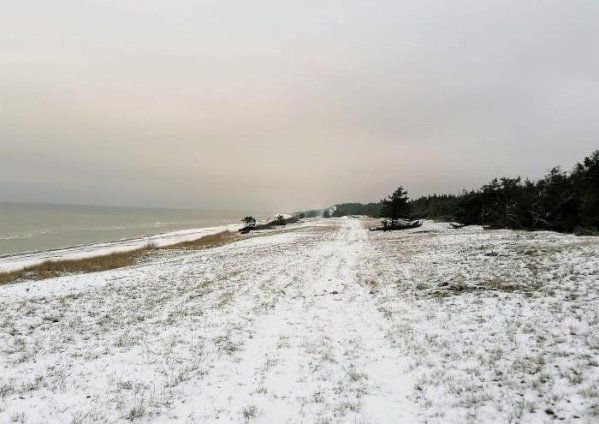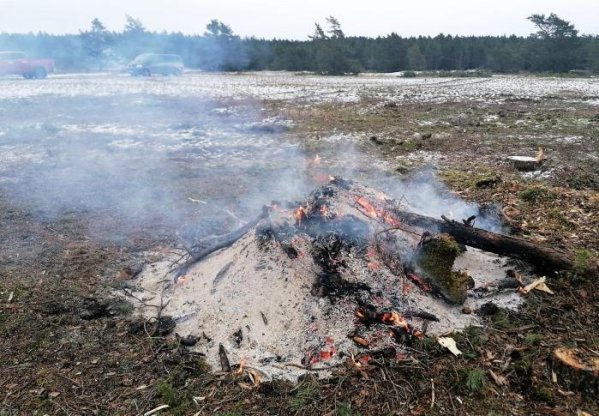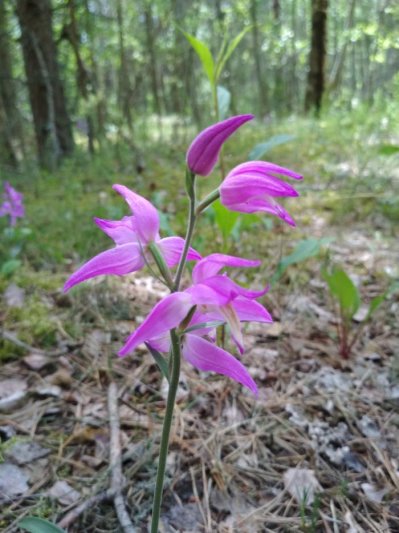The Ambitious Restoration Works of the Grey Dunes are Already Halfway
Until this December, JSC “Latvia's State Forests” (LVM) will continue to carry out the large-scale grey dune restoration works; in total, LVM is to restore the grey dunes in the Northern Kurzeme region in a total area of almost 70 hectares. The works carried out, which are already coming to an end in some areas, are the most ambitious set of measures for the restoration of this protected and rare priority habitat of the European Union so far in Latvia.
“At the end of February, we performed one of the final works in the restoration of the full cycle of the grey dunes – we purposefully burnt the previously created piles of branches. This way, we could burn the excess nutrients that had accumulated over time and contributed to the overgrowth of the dunes. In the place of the burnt piles, open sand areas will be formed, which will be illuminated by the sun and which are very important for the rare species of sunflowers that live here,” says Ieva Rove, specialist in dune habitats and Head of LVM Environmental Projects.
In-depth research and planning works, which were started in 2021, have been coordinated with the responsible institutions. In the course of this, a number of challenges had to be overcome. The main challenge was access to renewable areas while preserving natural values, as well as detailed planning of works in field conditions. Several areas were so heavily overgrown that it was necessary to carry out deforestation.
“Like the restoration of swamps, nature experts in Latvia already for decades have been discussing the need to restore the open seaside dunes. In practice, LVM's grey dune restoration work is the first and most voluminous in the territories of the nature reserve “Ovīši” and “Užava”, both in terms of the area and the complex solutions used,” continues Ieva Rove.
Landscape has been restored in the course of logging works
First, the grey dunes had to be freed from overgrowth such as small trees and shrubs. The logging work was previously carefully planned, for example, to create safe and efficient technological corridors for the equipment. LVM North Kurzeme logging team worked for the first time in the dune area so close to the sea: both the irregular terrain and the fine dune sand made it difficult to move the equipment. In the course of the works, biologically old and large pines and their groups, junipers, as well as other elements of park-like landscape structures, which were dusted in sand, were preserved. These logging work had to be performed with special care so as not to damage the trees to be preserved.
New experience in forestry work
The task of the forestry staff in these areas was to cut down smaller trees and shrubs and collect and remove felling residues. Part of the felling residues were collected in piles and burnt in the first months of the year to form the open sand squares needed for dunes. At the “Ovīši” nature reserve, the burning and cleaning works have already been completed, while at “Užava” works are scheduled to be done until the start of the fire period and resumed in the autumn after the end of the fire period. In total, forestry work in both areas has now been completed in 37 hectares of the total planned nearly 70 hectares.
“Each year, the forestry team performs the so-called habitat tending, both by mowing to maintain lawns and from preventing them to be overgrown with shrubs and trees, and restoring the rut places in the swamp, but we have not done complex work of this scale and complexity before, which means that we all gained new experience. The weather was the biggest challenge for us, as the rain and snow made it difficult to burn the campfires. To meet the deadline, the service providers used every single moment when the weather allowed for burning,” says Lauris Ķemlers, Head of Forestry at the North Kurzeme region.
All forestry work in the grey dunes was done by hand labour. Although the availability and willingness of service providers to work in difficult conditions was a great challenge, the company succeeded in attracting responsible and courageous service providers – at the “Ovīši” nature reserve the work was done by Bruno Grunte, whereas at the “Užava” nature reserve – by SIA “AISA MEŽI”, SIA ”Latliv” and SIA ”Visurīši”.
The grey dunes will also provide favourable living conditions for a rare and beautiful grey and wooded seaside dune plant, the Cephalanthera rubra, also known as red helleborine.
Work continues; the success is evaluated in monitoring
The work in the grey dunes will be fully completed in 2023. To assess the success of the work done and to follow the processes, regular observations are carried out in the restored areas according to a special methodology or monitoring implemented by dune experts. The grey dunes are a disorder-dependent habitat, so even after extensive restoration work in the future, the area will require targeted disruption of open landscapes and sandy areas.
On the coast of North Kurzeme, the places where the dunes have been restored can already be well seen; the view has an open landscape with some pines and junipers. It is how the grey dunes must be – open, with exposed sand areas, individual pines, and their groups.
The grey dunes in Natura 2000 territories in nature reserve “Užava” and “Ovīši”, were almost overgrown and thus lost both the typical landscape of the seaside and the living conditions of various rare and protected species that only live in a narrow band along the narrow band the sea. Higher population, coastal fishing in the early 20th century and the state border protection patrols in the mid-20th century provided regular disruptions and partial maintenance of open dune areas.
The “Ovīši” and “Užava” nature reserves are two of the 14 specially protected natural areas, where LVM improves and restores habitats of EU importance within the framework of the European Union co-financed Cohesion Fund project “Management measures in specially protected natural areas and micro-reserves to improve the state of protection of habitats and species” (No. 5.4.3.0/20/I/001). The project is scheduled to last until the end of 2023.






